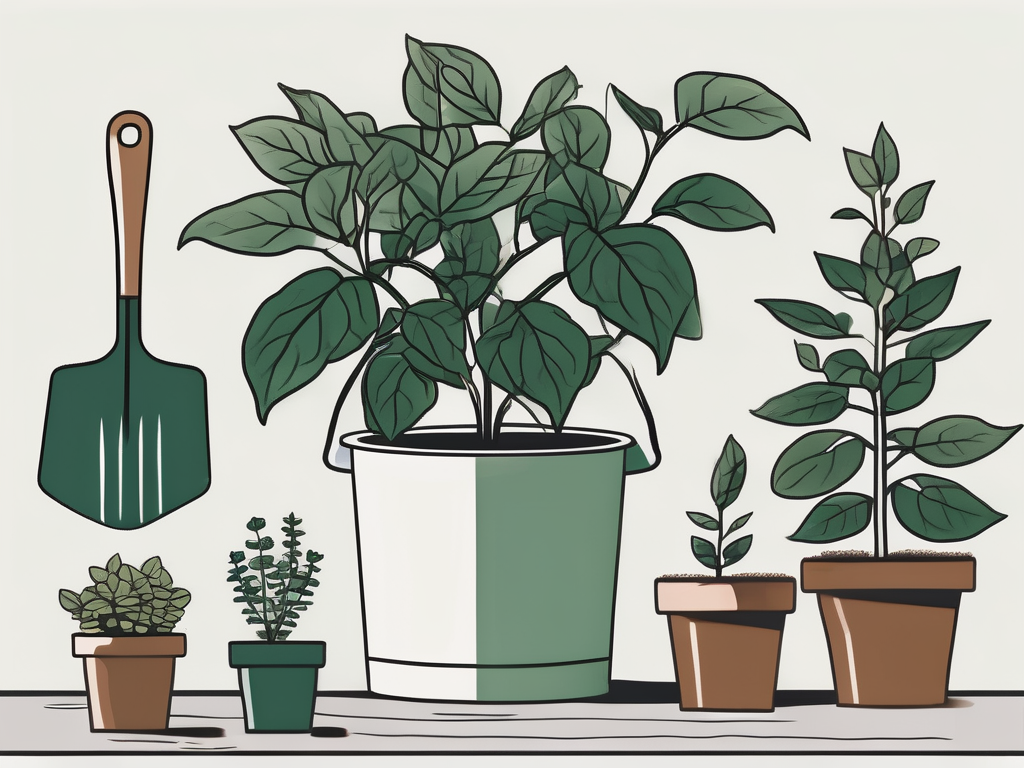
Majesty Palms are a popular choice among plant lovers, thanks to their elegant, arching leaves that bring a touch of the tropics into any home. But let's be honest, who wouldn't want more of these beauties around the house? The good news is, you can propagate your Majesty Palm and multiply that tropical vibe without splurging on new plants.
This post will walk you through the process of propagating Majesty Palms, from understanding the best methods to ensuring your new little palms thrive. Whether you're a seasoned plant parent or just getting started, you'll find the guidance you need right here.
Understanding Majesty Palm Propagation
Before we get into the nitty-gritty of propagation, it's helpful to understand what you're getting into. Majesty Palms, like many palms, aren't propagated from cuttings as many other houseplants are. Instead, they grow from seeds or by dividing offshoots, if you're lucky enough to have a plant that produces them.
Seeds are the most common method for propagating Majesty Palms. However, this requires patience, as germination can take several weeks to months. If your palm produces offshoots or pups, you can remove these and plant them separately. While this method is less common, it's quicker and more straightforward.
Keep in mind that Majesty Palms are slow growers. Whether you're starting from seed or a pup, it will take time for your new plant to reach the majesty of its parent. But isn't the anticipation part of the fun?
Gathering Your Supplies
Alright, let's get prepared! Like any successful project, propagating a Majesty Palm requires the right tools. Here's what you'll need:
- Quality potting mix: A well-draining potting mix is essential. Look for a mix that's designed for palms or tropical plants.
- Pots: Small pots are ideal for starting seeds or pups. Make sure they have drainage holes to prevent waterlogging.
- Seed tray or starter pots (for seeds): These are great for germinating seeds before transferring them to individual pots.
- Watering can: A small, gentle watering can help avoid disturbing the soil.
- Plastic wrap or a humidity dome: These can help maintain moisture levels while seeds germinate.
- Sharp knife or pruning shears (for pups): If you're lucky enough to propagate from pups, a clean cut is crucial.
Having these tools on hand will set you up for success and make the process smoother. Plus, who doesn't feel more professional with the right gear?
Preparing the Seeds
If you're going the seed route, patience is your new best friend. Majesty Palm seeds require a bit of prep work before you plant them.
Soaking the Seeds
Start by soaking the seeds in warm water for 24 to 48 hours. This helps soften the seed coat and encourages germination. Change the water every 12 hours to keep it fresh. It's a small step, but it makes a big difference in getting those seeds to sprout.
Filling the Seed Tray
While your seeds are soaking, prepare your seed tray. Fill it with the potting mix, leaving about half an inch from the top. Water the soil lightly so it's damp but not soggy. This will give your seeds a comfy place to start their journey.
Planting the Seeds
Once soaked, plant the seeds about an inch deep in the soil. Cover them gently and pat the soil down lightly. If you're using a seed tray, space them a few inches apart to give each seedling room to grow.
Cover the tray with plastic wrap or place it under a humidity dome to keep the environment warm and moist. Check the moisture level regularly, and mist the soil if it starts to dry out. Your seeds are on their way!
Caring for Seedlings
Now that your seeds are planted, it's time to nurture them into seedlings. This stage is all about creating the right environment.
Light and Temperature
Majesty Palm seedlings love bright, indirect light. Too much direct sunlight can scorch them, so a spot near a window with filtered light is ideal. If you're in a darker climate, consider using a grow light to give your seedlings a boost.
Temperature is also crucial. Aim for a consistent temperature between 75°F and 85°F. This might mean relocating your seedlings to a warmer spot in the house or using a heat mat under the seed tray.
Watering
When it comes to watering, less is more. Keep the soil consistently moist, but avoid waterlogging. Overwatering can lead to root rot, which is a common issue with palms. A light misting every couple of days should do the trick.
Transplanting
Once your seedlings have a few sets of leaves and are a couple of inches tall, it's time to transplant them into their own pots. Choose pots that are slightly larger than the seedling's root ball, and fill them with fresh potting mix. Gently remove the seedlings from the seed tray, being careful not to damage the roots, and plant them in their new homes.
Dividing Offshoots
If you're lucky enough to have a Majesty Palm with pups, you're in for a treat. Dividing offshoots is quicker than growing from seed and gives you a head start on a mature plant.
Identifying the Pups
Look for offshoots that are at least 6 inches tall and have their own root system. These are usually found growing around the base of the parent plant. If you can't see any roots, it's best to leave the pup attached for a little longer.
Separating the Pups
Once you've identified a viable pup, it's time to separate it from the parent plant. Carefully remove the plant from its pot and gently brush away the soil to expose the roots. Use a sharp knife or pruning shears to cut the pup away, making sure to include as much of the root system as possible.
Planting the Pups
Plant the pup in its own pot, using the same type of potting mix as the parent plant. Water it lightly and place it in bright, indirect light. It might take a few weeks for the pup to start growing independently, so be patient and keep the soil moist but not soggy.
Common Issues and Troubleshooting
Like any plant care task, propagation can come with its own set of challenges. Here are some common issues you might encounter and how to address them.
Seedlings Not Sprouting
If your seeds aren't sprouting, double-check that the temperature is warm enough and that the soil is consistently moist. Sometimes, seeds just need more time, so patience is key.
Yellowing Leaves
Yellowing leaves on seedlings or pups can indicate overwatering. Check that your pots have drainage holes and that excess water isn't pooling at the bottom. Adjust your watering schedule to let the soil dry out slightly between waterings.
Pests
Keep an eye out for common pests like spider mites or mealybugs, which can affect young plants. If you notice any pests, treat the plant with insecticidal soap or neem oil, following the instructions on the product.
Helpful Tips for Success
Here are some additional tips to help ensure your Majesty Palm propagation journey is a success:
- Patience is key: Remember, palms grow slowly, so don't be discouraged if you don't see immediate results.
- Consistency is crucial: Regular care and attention will pay off in the long run.
- Keep learning: Every plant is unique, so stay curious and open to learning what works best for your particular setup.
By following these tips, you'll be well on your way to creating a thriving collection of Majesty Palms to enjoy and share with others.
Final Thoughts
Propagating Majesty Palms is a rewarding experience that requires patience, the right tools, and a little bit of love. By following the steps outlined, you can successfully grow new palms from seeds or offshoots.
At Cafe Planta, we're passionate about helping you on your plant journey. Whether you're looking for new plants to add to your collection or have questions about plant care, we're here to help. Feel free to email us, or connect with us on Instagram. Let's grow together!












